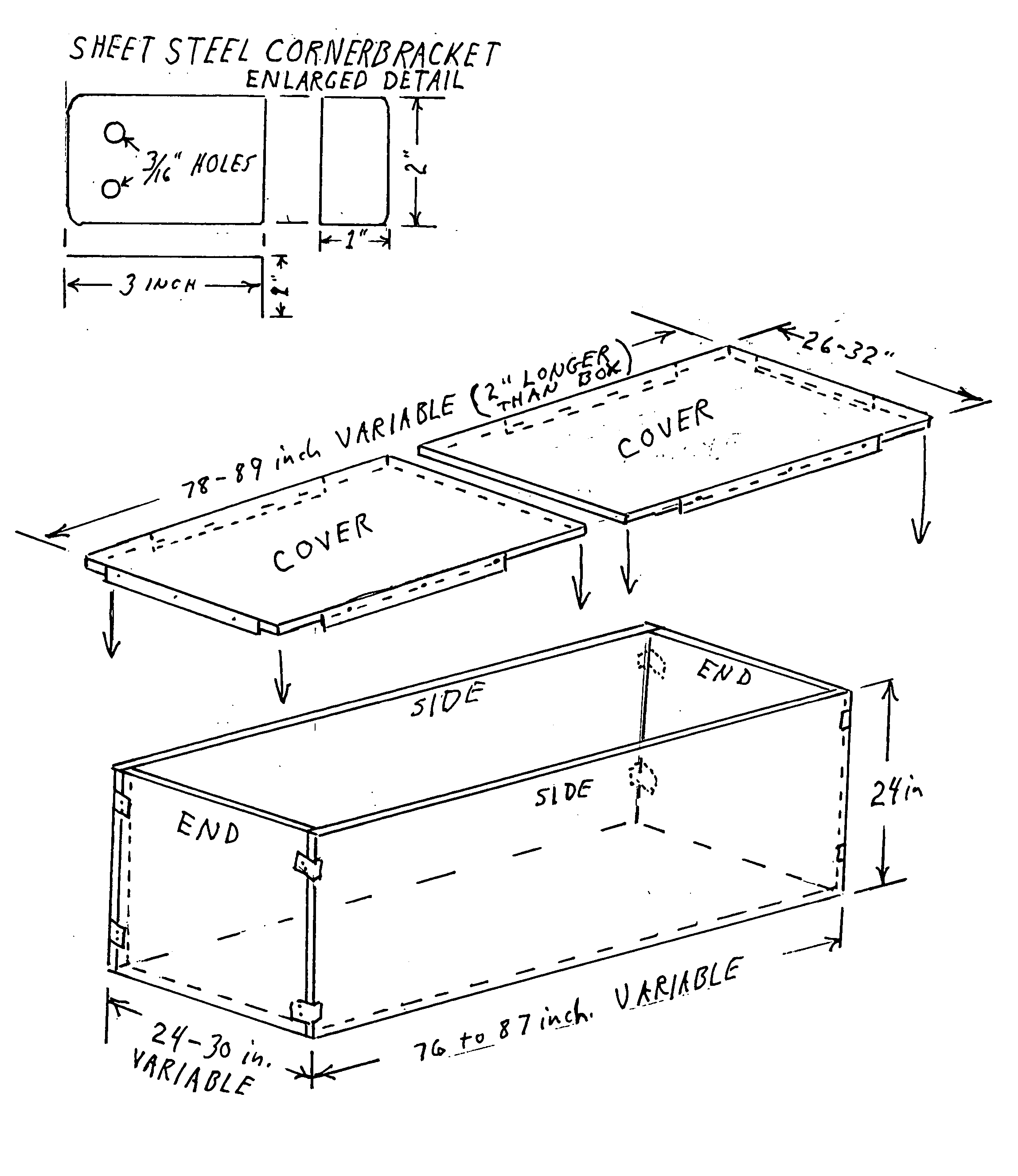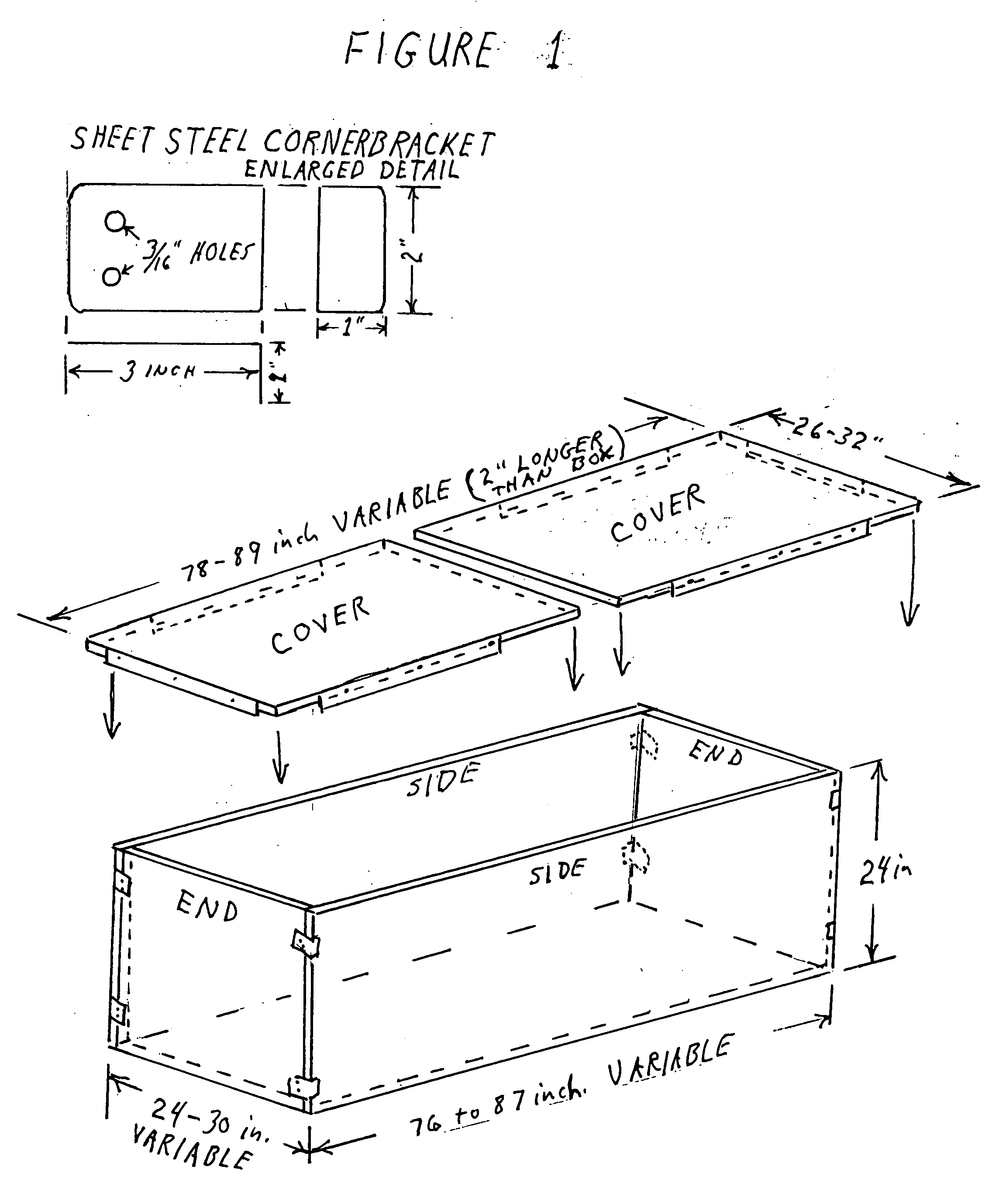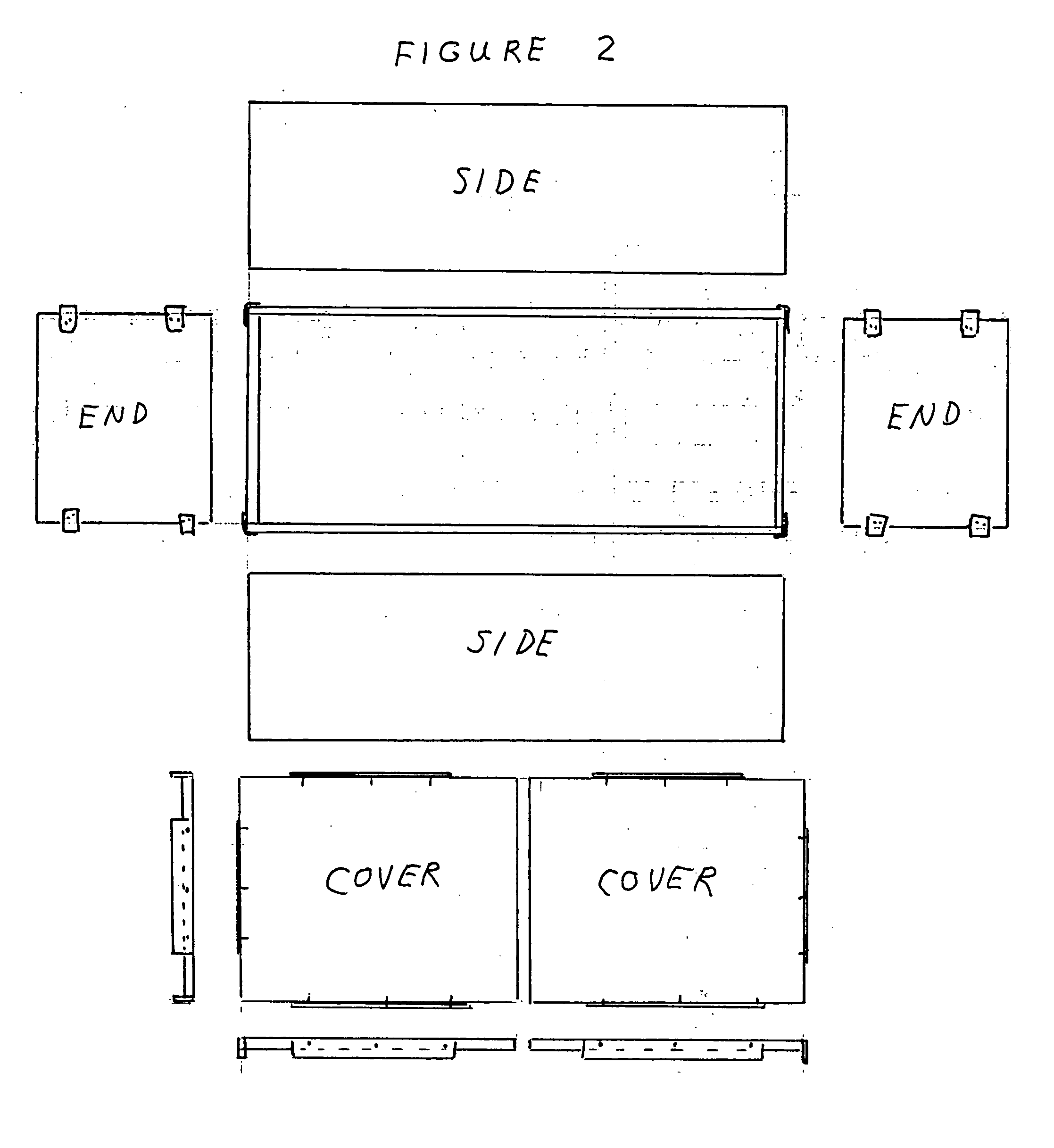Sectional grave liner
- Summary
- Abstract
- Description
- Claims
- Application Information
AI Technical Summary
Benefits of technology
Problems solved by technology
Method used
Image
Examples
Embodiment Construction
[0012] The sectional liners are made from recycled plastic sheeting which can be purchased from lumber suppliers in 4′×8′ sheets. 1″ thick material is used for the covers, and ¾″ material for the sides and ends. ¼″ material is used to form the lips on the covers. (see FIG. 2).
[0013] The sides and ends are made by cutting the 4×8 sheets in half lengthwise to form two 24″ sheets, which are cut into 30″ wide pieces to form the end pieces and 87″ pieces to form the sides. These are the sizes for a standard size 30 inch burial liner. (Sections may be cut smaller to form smaller burial containers, if a smaller liner is required. The width of the ends determines the “width” of the liner. Because the end is between the sides when assembled, as can be seen in the views attached, the inside length of the liner is actually 1.5 inches less than the cut length of the sides) All cutting may be done on a table saw, an electric circular saw or any other saw that is normally used for wood.
[0014] T...
PUM
 Login to View More
Login to View More Abstract
Description
Claims
Application Information
 Login to View More
Login to View More - R&D
- Intellectual Property
- Life Sciences
- Materials
- Tech Scout
- Unparalleled Data Quality
- Higher Quality Content
- 60% Fewer Hallucinations
Browse by: Latest US Patents, China's latest patents, Technical Efficacy Thesaurus, Application Domain, Technology Topic, Popular Technical Reports.
© 2025 PatSnap. All rights reserved.Legal|Privacy policy|Modern Slavery Act Transparency Statement|Sitemap|About US| Contact US: help@patsnap.com



